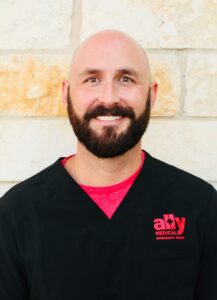Strokes can be life-threatening and cause significant, lasting disabilities. However, prompt recognition and treatment can drastically improve outcomes. Dr. Jeremy Kenter, D.O., Chief Medical Officer at Ally Medical Emergency Room, will delve into the signs of a stroke, emphasize the importance of quick action, and discuss preventative strategies to reduce stroke risk.
Recognizing a Stroke: The FAST Method
A stroke occurs when blood flow to part of the brain is interrupted or reduced, preventing brain tissue from getting oxygen and nutrients. Brain cells begin to die in minutes. Recognizing the signs of a stroke can be the difference between life and death, or between full recovery and lasting disability. To remember the signs, think “FAST”:
- Face Drooping: One side of the face may droop or numb. When the person tries to smile, the smile might appear uneven.
- Arm Weakness: One arm may feel weak or numb. Ask the person to raise both arms. Does one arm drift downward?
- Speech Difficulties: Speech may be slurred, or the person may have trouble speaking or understanding speech. Ask them to repeat a simple sentence, like “The sky is blue.” Are the words slurred or strange?
- Time to call Emergency Services: If someone shows any of these symptoms, even if the symptoms go away, call emergency services immediately. Note the time when the first symptoms appeared. This information is crucial and can affect treatment decisions.

Ally Medical Dripping Springs
“Time is crucial in treating a stroke,” Dr. Kenter said. “Treatments are most effective when given soon after a stroke begins. Ally Medical ER locations are equipped with medications like thrombolytics, which can dissolve the blood clot causing an ischemic stroke.”
However, these medications need to be administered within a few hours. Quick action can mean a better recovery and a reduction in complications such as permanent brain damage or disability.
Subscribe to our newsletter
Take Steps to Reduce Stroke Risk
Prevention plays a key role in managing the risk of stroke. Several lifestyle and medical approaches can significantly reduce this risk:
- Manage Blood Pressure: High blood pressure is a leading cause of stroke. Managing your blood pressure through a healthy diet, regular exercise, and medication can greatly reduce your risk.
- Control Diabetes: People with diabetes are at higher risk of stroke. Controlling blood sugar levels through diet, exercise, and medication can mitigate this risk.
- Quit Smoking: Smoking accelerates clot formation by thickening your blood and increasing the amount of plaque buildup in arteries. Quitting smoking can reduce your stroke risk.
- Eat a Balanced Diet: A diet rich in fruits, vegetables, whole grains, and low in saturated fats, trans fats, and cholesterol can lower stroke risk. Limiting salt in your diet can also help manage blood pressure.
- Exercise Regularly: Regular physical activity can improve overall health and reduce weight, lowering the risk of stroke.
- Limit Alcohol
Use: Excessive alcohol consumption increases the risk of stroke. Limiting intake can play a crucial role in stroke prevention.
Recognizing the signs of a stroke and acting FAST can save lives and improve recovery rates. By incorporating preventive measures into your daily life, you can significantly reduce your risk of experiencing a stroke. Stay informed, stay vigilant, and take action to protect your health. If you or someone around you is showing signs of a stroke, get them to an emergency room immediately for evaluation and treatment. You can find the closest Ally Medical ER near you at AllyMedical.com/Locations.

Dr. Kenter, Chief Medical Officer



